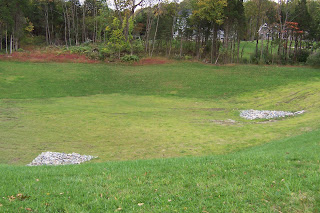Forest Restoration

This week, I attended a symposium on how each of us can contribute to preserving our woodlands, hosted by the Frelinghuysen Arboretum. The keynote speaker was Leslie Jones Sauer, who spoke passionately about forest restoration. The topic resonated so strongly with me that, had I been 30 years younger, I would have run right out and started a new career!
Retired from the firm that she founded, Andropogon Associates, a design firm that specializes in integrating environmental protection and restoration with landscape architecture, Leslie provided many examples of both bad planning and how we are loving our outdoor spaces to death. Mountain bikers, for example, are some of the most destructive visitors to our parks, demolishing everything in their paths, and leaving in their wake severe erosion problems for the rest of us to repair. A state park only one mile away from my home is seriously considering closing all of its trails to bikers.
The news isn’t all bad, however. Leslie showed what can be done with low-cost, low-tech techniques that can help the forest recover. What we need is the will to do it.
On a smaller scale, we can use our own back yards to knit back together the fragmented fabric of the forest. While we might need to fence and spray to keep deer depredation down, we can all do our part by planting native trees, shrubs, and perennials which create shelter and food for native birds and wildlife.
For those of us in government, it is essential to start demanding that developers be held accountable for the forests that they destroy, either through protective ordinances that prohibit it in the first place, or ordinances that require restoration.

